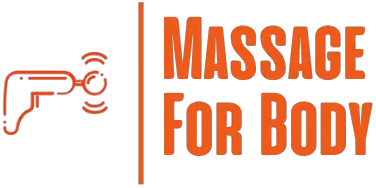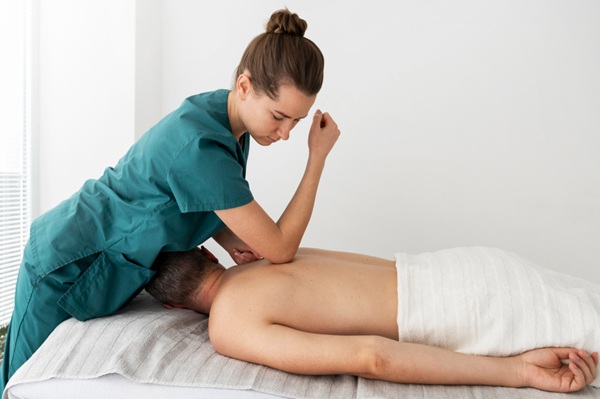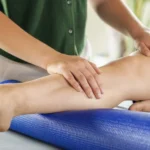Curious about CMT massage and how it works? CMT stands for Compression Massage Therapy—a specialized form of deep tissue massage that uses strategic pressure and targeted stretching to relieve pain, improve circulation, and restore mobility. Often used by athletes, physical therapists, and clinical massage practitioners, CMT massage is designed to reduce inflammation, ease muscle tension, and support faster recovery. In this guide, you’ll learn what CMT massage involves, the compression therapy benefits it provides, and whether it’s the right treatment for your wellness goals.
Table of Contents
What is CMT Massage?

CMT massage, short for Compression Massage Therapy, is a form of therapeutic bodywork that applies targeted pressure using the hands, forearms, or elbows to release muscle tension and enhance circulation. This deep tissue technique is often used to treat chronic pain, muscle spasms, limited range of motion, and postural imbalances. Unlike lighter massage styles, CMT massage focuses on working deeper layers of muscle and connective tissue to restore function and reduce inflammation.
Types of CMT Massage Techniques
Compression Massage Therapy isn’t a one-size-fits-all treatment—it can be tailored to meet individual therapeutic needs. A CMT-certified therapist may draw from several modalities to customize the experience, including:
- ✅ Deep Tissue Massage – Focuses on breaking up adhesions and relieving chronic muscle tightness.
- ✅ Trigger Point Therapy – Targets specific knots or hyperirritable points in muscles to reduce referred pain.
- ✅ Myofascial Release – Gently stretches and loosens the fascia (connective tissue) to restore movement and reduce tension.
- ✅ Swedish Techniques with Compression Focus – Incorporates long gliding strokes with strategic pressure to promote relaxation and lymphatic flow.
Your massage therapist will perform an initial assessment to identify the best approach for your specific goals—whether you’re dealing with persistent back pain, recovering from an injury, or simply seeking the compression therapy benefits that come with increased circulation and reduced muscle fatigue.
What Is a CMT Massage Therapist?
A CMT massage therapist is a trained professional in Compression Massage Therapy, a specialized form of deep tissue massage focused on applying firm, targeted pressure to reduce muscle tension, boost circulation, and improve mobility. Using their hands, elbows, and sometimes feet, these therapists help manage pain and support recovery.

💡 Fast Facts About CMT Massage Therapists
👐 Trained in Anatomy
CMT therapists study anatomy and physiology to understand how massage impacts muscles, joints, and the nervous system.
👐 Skilled in Targeted Techniques
They use specific methods like compression, kneading, and tapping to address chronic pain, stiffness, or limited range of motion.
👐 Use of Tools
Many CMT therapists also incorporate massage tools, hot/cold therapy, or foam rollers for deeper relief.
👐 Support for Common Conditions
CMT can help with:
- Chronic pain and tension
- Headaches and stress
- Post-injury recovery
- Reduced flexibility
Compression Therapy Benefits
Compression therapy is a powerful therapeutic approach used in CMT massage to support healing, reduce pain, and improve overall musculoskeletal health. By applying sustained, rhythmic pressure to soft tissue, compression stimulates the body’s natural recovery processes. The compression therapy benefits offered through this method go far beyond relaxation—they play a key role in injury recovery, chronic pain management, and performance enhancement.

✅ Key Compression Therapy Benefits for Muscle Recovery
One of the most well-known compression therapy benefits is improved blood circulation. Increased blood flow delivers more oxygen and nutrients to muscle tissue, helping to reduce swelling, flush out toxins, and accelerate healing after physical exertion or injury.
✅ Reduces Muscle Tension and Spasms
By applying deep, targeted pressure, compression therapy relaxes overactive muscles and reduces spasms. It can also break down adhesions and scar tissue that limit movement and cause discomfort.
✅ Relieves Pain and Inflammation
Many clients seek CMT massage for its ability to ease chronic pain. Sustained compression helps reduce inflammation and can offer relief for conditions like fibromyalgia, arthritis, and postural strain.
✅ Enhances Mobility and Flexibility
CMT massage improves range of motion by relaxing stiff muscles and fascia. This makes it easier to move without pain or restriction—especially helpful for those in physical therapy or dealing with injury recovery.
✅ Supports Detoxification and Lymphatic Drainage
Another of the notable compression therapy benefits is enhanced lymphatic flow. Gentle, rhythmic pressure encourages lymph movement, reducing fluid retention and supporting the body’s natural detox process.
✅ Promotes Deep Relaxation
Despite being a deeper form of massage, compression therapy can calm the nervous system, reduce stress hormones, and leave you feeling grounded and restored.
Contraindications: When to Avoid CMT Massage
While CMT massage offers many therapeutic benefits, it’s not suitable for everyone. Because it involves deep pressure and targeted compression techniques, certain health conditions may pose a risk or require medical clearance before treatment.
⚠️ Conditions That Contraindicate CMT Massage
Avoid CMT massage if you currently have or are recovering from any of the following:
- Deep vein thrombosis (DVT)
- Recent surgery or unhealed surgical incisions
- Active cancer or undergoing cancer treatment
- Acute thrombophlebitis (inflamed veins)
- Severe or acute edema (swelling)
- Open wounds, skin infections, or contagious skin conditions
- Fractures or recent bone injuries
- Active inflammation or areas of infection
- Fever or signs of systemic illness
- Bleeding disorders or anticoagulant therapy
- Unexplained skin rashes
These conditions may worsen with deep compression and require medical attention before any hands-on therapy is performed.
⚠️ Cautionary Conditions: Consult Your Doctor First
In some cases, CMT may still be appropriate but should only be performed under a healthcare provider’s supervision. Please consult your physician if you have:
- High blood pressure or hypertension
- Varicose veins
- Heart conditions or cardiovascular disease
- Are pregnant or postpartum
Always disclose your full medical history to your massage therapist prior to treatment. A qualified CMT therapist will assess whether compression therapy is safe and appropriate—or if an alternative massage approach would be more suitable.
Preparing for a CMT Session
Preparing for your CMT (Compression Massage Therapy) session can make a big difference in the effectiveness and comfort of the treatment. Here are a few key tips to help you get the most out of your appointment:
👕 Wear Comfortable, Accessible Clothing
Choose loose-fitting, breathable clothing that’s easy to remove or adjust. This allows your massage therapist to access key muscle groups without restriction. Avoid wearing tight outfits, jewelry, heavy makeup, or strong fragrances, as these can interfere with the session or cause skin irritation.
⏰ Arrive on Time (or a Bit Early)
Getting to your appointment on time helps you settle in, complete any intake forms, and relax before your session begins. It also ensures your therapist can use the full session time effectively without feeling rushed.
💬 Communicate Clearly
Be upfront about any specific areas of tension, injury, or discomfort. Let your therapist know if you have a medical history that could impact the massage. The more your therapist knows, the better they can personalize the compression techniques to meet your goals and avoid sensitive areas.
🧠 Keep an Open Mind
CMT massage may involve unfamiliar techniques or deeper pressure than you’re used to. Trust the process and remain open to the experience—it’s designed to support long-term healing, not just short-term relaxation.
⚠️ Expect Some Discomfort (That’s Okay!)
Because CMT targets deep muscle layers and connective tissue, mild discomfort or pressure is common—especially in tight or inflamed areas. Always communicate during the session if the pressure feels too intense. Discomfort should never cross into sharp or unbearable pain.
Frequently Asked Questions
How long does a CMT session typically last?
A CMT massage session typically lasts between 30-60 minutes. During the session, the massage therapist will use a range of massage techniques to improve circulation, reduce tension, and relieve muscle pain. The length of the session will depend on the individual’s needs and can be adjusted accordingly.
What Areas of the Body Does CMT Massage Target?
CMT Massage targets the back, neck, and shoulders, as well as the arms, hands, legs, and feet. It can also address tightness, tension, and soreness in the muscles, tendons, and ligaments. This type of massage is ideal for improving circulation, relieving muscle tension and providing relief from a variety of chronic pain conditions.
Is CMT Massage Safe for Everyone?
CMT massage is generally a safe and effective form of therapy for most people. It can help reduce joint pain, muscle tension, and improve the range of motion. Before beginning treatment, it is important to speak with a trained practitioner to ensure that CMT massage is the right choice for you. People with certain medical conditions, such as diabetes, high blood pressure, pregnancy, or cancer, should speak with their doctor before beginning any massage therapy.
What should I expect from a CMT Session?
CMT massage is a holistic therapy that combines therapeutic massage with soft tissue manipulation. During a CMT session, the therapist will use their hands to apply pressure to the body’s soft tissue, such as muscles, tendons, and ligaments, to release tension and reduce pain. The therapist may also use stretching and range-of-motion techniques to improve mobility and flexibility. Depending on the individual’s needs, the therapist may also incorporate other massage techniques, such as Swedish massage, into the session.
💡Final Thoughts
CMT massage is a form of manual therapy that is beneficial for many people. It can help to reduce pain, fatigue, and muscle tension and can improve overall muscle and joint function. It can also help to improve posture, reduce stress and promote relaxation. CMT massage should be tailored to the individual’s needs and is often used in combination with other forms of manual therapy such as myofascial release and trigger point therapy.
💡 Ready to Experience the Benefits of CMT Massage?
Whether you’re managing chronic pain, recovering from an injury, or simply want to improve your mobility, Compression Massage Therapy may be the relief you’ve been looking for.
👉 Learn more about related techniques in our guide to Deep Tissue Massage Benefits.
📚 References
- Dewith, M. (2013). Compression Massage Technique: A New Massage Technique Utilizing Rapid Compressive Movements. International Journal of Therapeutic Massage & Bodywork, 6(1), 19-23.
- Ueda, S. (2015). Compression Massage: Applying Compression for a Deep Tissue Massage. Massage Magazine.
- Mayo Clinic. (2020). Massage: Get in Touch With Its Many Benefits. Mayo Clinic.
⚠️ Disclaimer:
This article is for informational purposes only and does not constitute medical advice. Always consult with a licensed healthcare provider or certified massage therapist before beginning any new treatment, especially if you have pre-existing health conditions or concerns.










